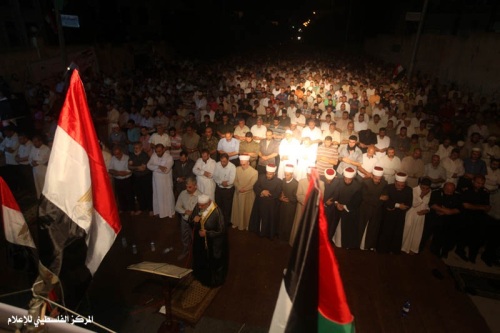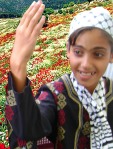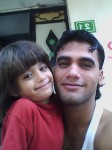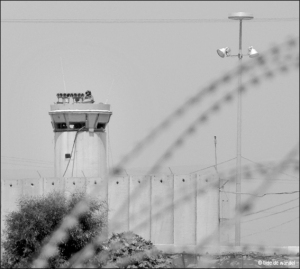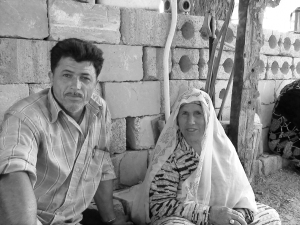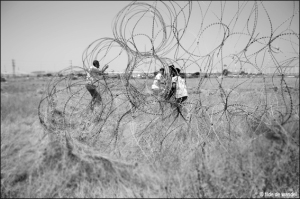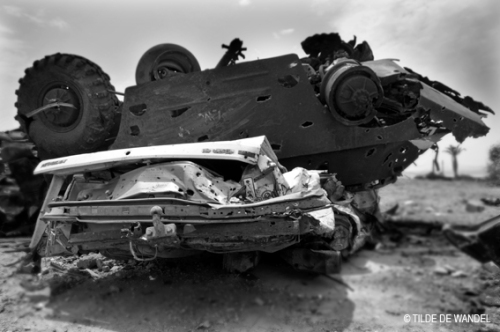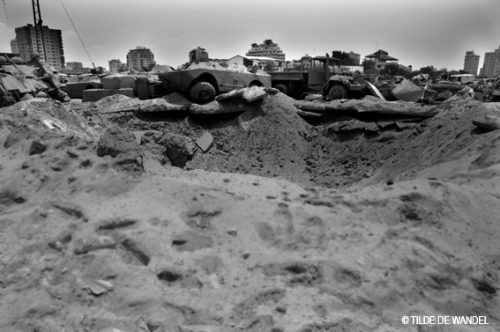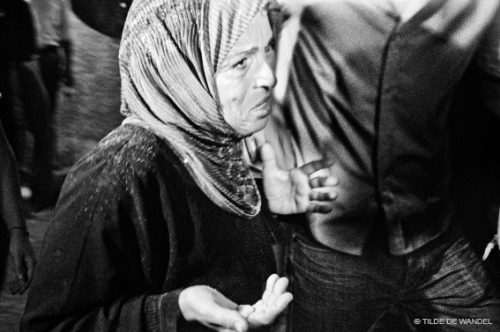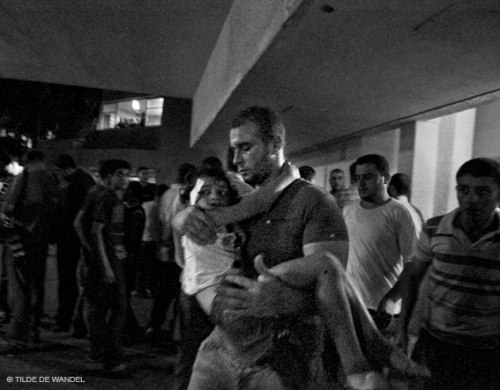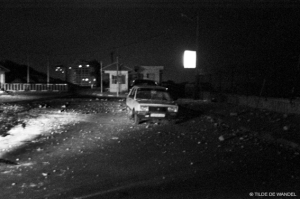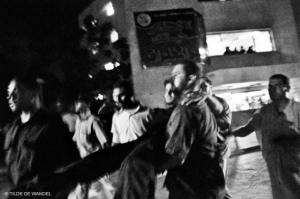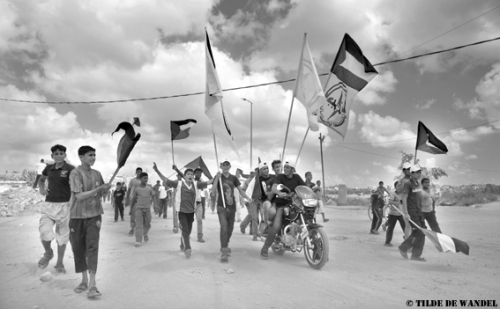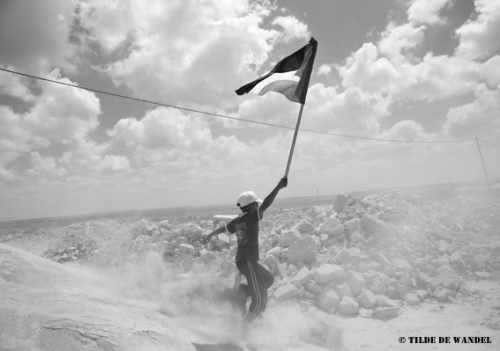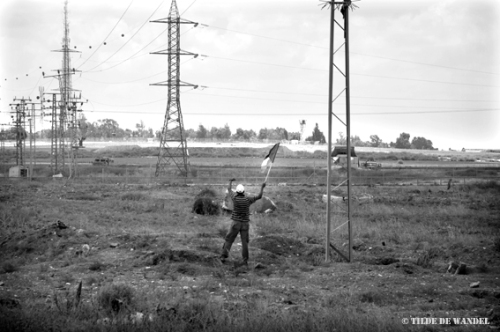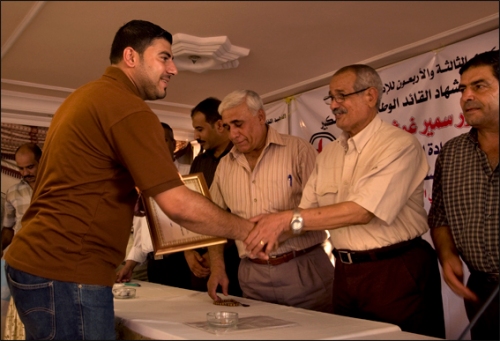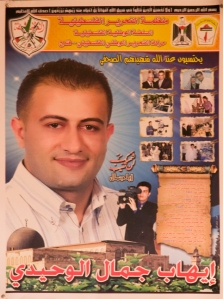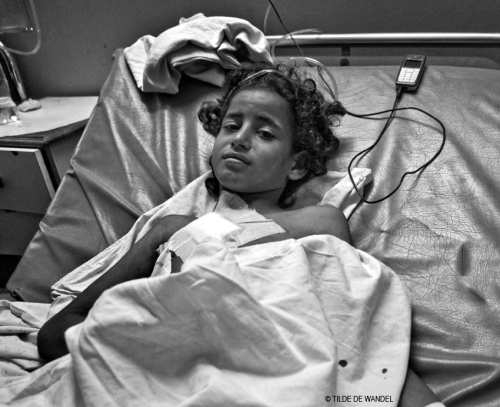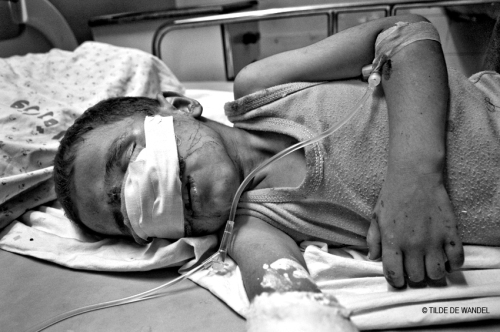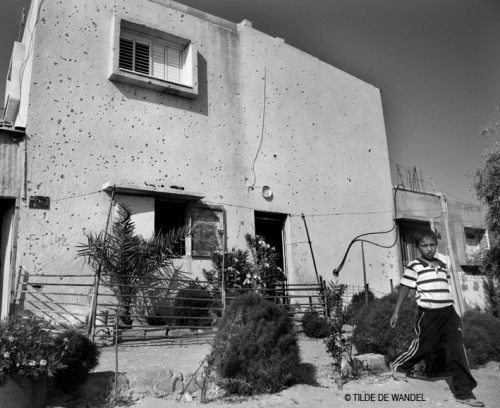From Mondoweiss, November 16, 2012
A View on a street and surrounding buildings devastated by an Israeli military airstrike which occurred on 14 November in the neighborhood of Tal el Hawa, city of Gaza, seen on
November 16, 2012. (Photo: Anne Paq/Activestills)
I’m writing this from near the Gaza seaport from where I can see smoke rising around me from the bombs that fall down on the Gaza Strip from the Israeli planes above. Words fail me. Despite the limits to life from Israel’s five-year siege on Gaza some kind of normality is attempted in Gaza. How could it be any other way when the majority of the population are children? Do families have any other option?
Yet this civilian population, most now holed out in the dense, tight refugee camp buildings and urban centres of Gaza are facing the wrath of some of the most powerful aerial warfare available to humankind. As I write the constant bombardments consume my senses and shake the entirety of my surroundings. For the over 300 people injured or killed so far by the Israeli F16s, drones and gunboat shellings the loss for them and their families will never relent.
I can barely write a sentence and more news — “six injuries from a bombing in Sheikh Radwan, children among them, including a 4-year old child who was playing in the street,” “Elderly man just killed in Zaytoun neighbourhood, with 4 injuries.” Friends have received text messages from the Israeli Occupation Forces saying in arabic, “Stay away from Hamas the second phase is coming.”
Twelve-year-old Abdullah Samouni, who I teach English to in Zeitoun camp called me a little while ago. “We’re really scared”, he said. “We moved to get away to Zeitoun and went to our grandmother’s house. Take care of yourself, there are so many bombs.” Abdullah lost his father, and his four-year-old brother was shot, when Israeli soldiers entered their house in the land offensive of Israel’s Cast Lead attacks on Gaza over the new year of 2009. In three days, Abdullah was injured and lost 29 members of his extended family. His mother Zeinat has moved her seven remaining children to a town further north, but bombs are raining down all over the Gaza Strip.
“We moved everyone out but bombing is so bad here. All of the kids are screaming. Whenever an attack happens they come and hold me. The children remembered what happened before, they think only the worst.” said Zeinat who like so many has had to put aside her own fears and tragedy to show strength for her children.
Seeing Western media continue to distort the picture of what is happening here, just as they did during the massacres that took place during Israel’s Cast Lead attacks, and any other offensive described as “retaliation” made my call with Abdullah all the more angry. This year from January 1st until November 6th this year 71 Palestinians were killed and 291 injured in Gaza, while no Israelis were killed and 19 were injured according to the United Nations. How many Western media outlets offer proportionate time to Palestinian victims as to Israeli victims? [1]
Just as the Israeli forces initiated the pretence for the Cast Lead attacks, this time the Israeli army’s initial attack took place on Thursday November 8th with an Israeli incursion into Gaza, in Abassan village. They opened fire indiscriminately and leveled areas of Palestinian land. The shooting from Israeli military vehicles seriously wounded 13-year-old Ahmed Younis Khader Abu Daqqa while he was playing football with friends, and he died the next day of his injuries.
On the 10th November, Palestinian resistance fighters attacked an Israeli army jeep patrolling the border with Gaza, injuring 4 Israeli occupation soldiers.
Israeli forces then targeted civilian areas, killing two more teenagers playing football, then bombed the gathering that was mourning their deaths, killing two more. Five civilians were killed and two resistance fighters, including three children. Fifty-two others, including six women and twelve children were wounded. For Gaza to be under such attack, could anyone doubt that resistance forces would fire back? Once Israeli forces had carried out further bombardments, one of which was the extra-judicial killing of the Hamas military commander Ahmed Jabari, the circle was complete. [2]
Since then during the last three days 29 Palestinians have been killed and three Israelis. The majority of Palestinian victims were civilians of which six were children. More than 270 have been injured of whom 134 are children and women. The vast majority are civilians. The number is rapidly rising.
Even this comparison is detached from the context that Gaza is under Israeli military occupation, illegal according to United Nations Resolutions and a five-year blockade, deemed collective punishment by all major human rights organisations, violating article 33 of the Geneva Conventions. The right to resist enforced military occupation by a foreign force is also enshrined in international law, a right that should be self-evident.
Which explained the jubilance from Palestinians in Gaza when rumours spread that one of the rockets which usually hit open land, this time brought down an Israeli F16 fighter jet, the likes of which had carried out over 600 airstrikes all over the Gaza Strip these last three days.
Indeed, our visits to hospitals didn’t take long to convince us that these Israeli aerial attacks and shelling from gunships have hit many civilian areas.
At the main Al-Shifa hospital, Gaza City, every ten minutes more people arrived in ambulances; an elderly man, a young man, a child, two more children. Once leaving the injured, the stretcher gets a new towel and is sprinted back out for the courageous paramedics of the Palestinian Red Crescent to go back out into the danger zones, to find the latest victims of attacks.
There weren’t many beds free in the intensive care unit where some had brain injuries from embedded shrapnel. While we were there, rushing in came a tiny child, ten month old girl, Haneen Tafesh. She had very little colour or life in her and was rolled on to the hospital bed. She had suffered a brain haemorrhage and a fractured skull. Later that evening we learned that she hadn’t survived.
Talking to the Director General of Al-Shifa, Dr Mithad Abbas he asked, “We know Israel has the most precision and advanced weaponry. So why are all these children coming in?” He stated that if casualties increased there would be a severe lack basic medicines and supplies, such as antibiotics, IV fluid, anaesthesia, gloves, catheters, external fixators, Heparin, sutures, detergents and spare parts for medical equipment. What’s more electricity blackouts would hit hard, without enough finance for suitable fuel for generators.
Once again as I write five huge blasts from nearby shake our building and our senses. The bombings have progressively escalated, especially once night falls. Jabaliya refugee camp, Shejaiya, Rafah and Meghazi I learned had been under a continuous barrage. One blast came down during an interview with a Canadian radio station which helped the audience to understand more than I could.
A 13-year-old girl, Duaa Hejazi was hit in Sabra neighbourhood as she walked back home with family. Shrapnel was embedded all over her upper body. “I say, we are children. There is nothing that is our fault to have to face this.” She told us. “They are occupying us and I will say, as Abu Omar said, ‘If you’re a mountain, the wind won’t shake you.’ We’re not afraid, we’ll stay strong.”
And so the night goes on. The near future of Gaza is uncertain. The fates of everyone here is uncertain. Which people now preparing to go to their beds, will have their lives turned upside down by the loss of a loved one these next few days. I know some of the warmest people here that I feel strongly attached to, that you would instantly care for if you met them. The complete madness of this violence makes me wonder what we have done to ourselves, how do we allow humanity to manifest itself in this way.
Outside you can make a difference. I’m asking you, because the Israeli army will not empathise with the people they are looking down on through their cockpit windows. Nor will their politicians. But you can empathise and you can act. The normal ways but multiplied by ten. Small and big efforts to create massive international mobilisation are the only way to reduce the extent of the horror and loss facing the Palestinians of Gaza.
The Israeli cabinet has approved the call-up of 75,000 reservists compared to the 10,000 reservists called up for the massacres during Israel’s air and land offensive in Cast Lead. There is not much time.
For further information from Gaza, please contact:
Adie Mormech (British)
@adiemormech
+970(0)592280943
[1] link to unispal.un.orgNSF/0/8F184E577967FC7285257AB40057A012

